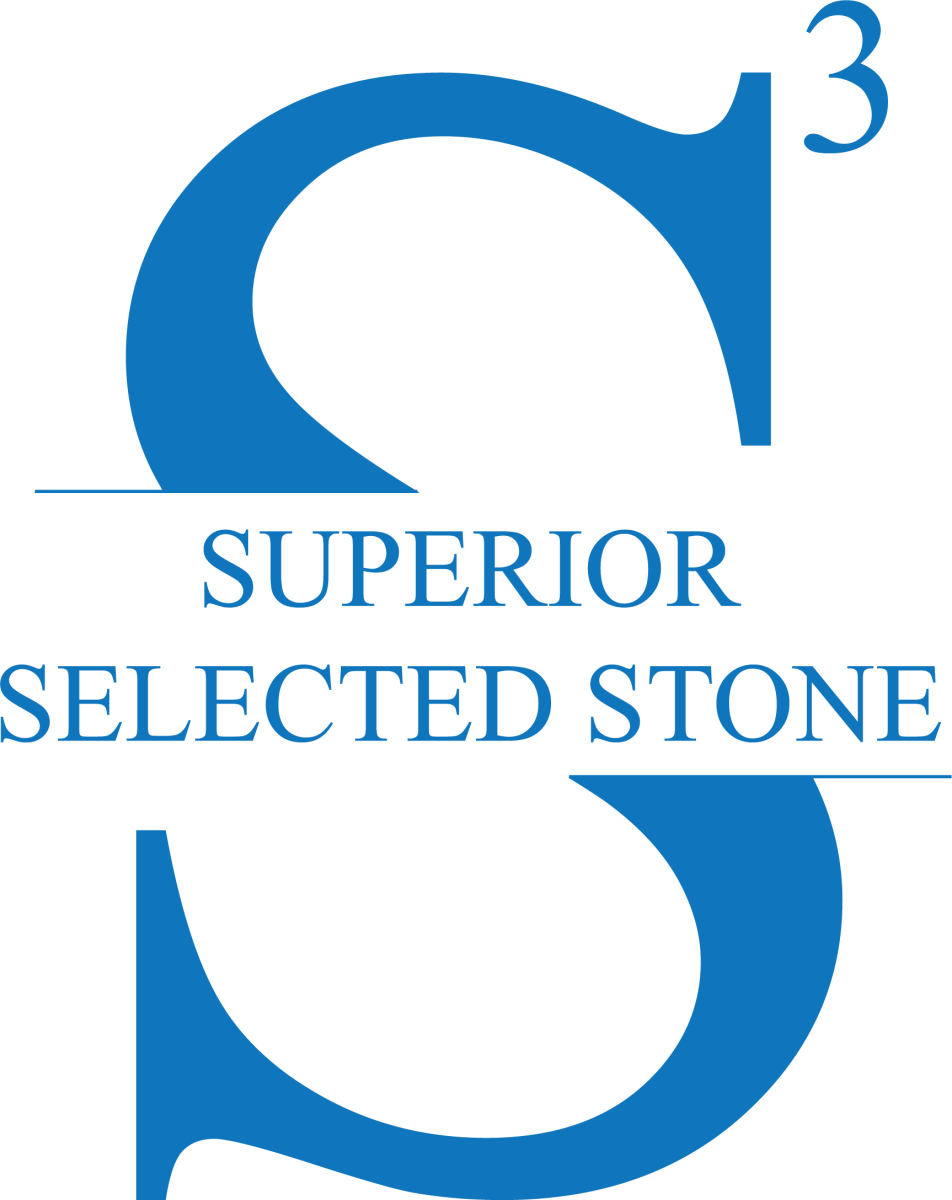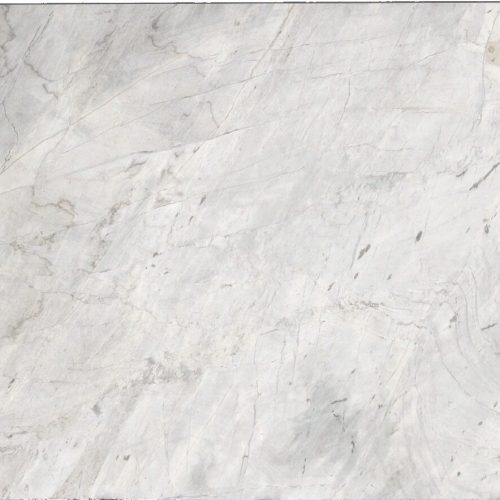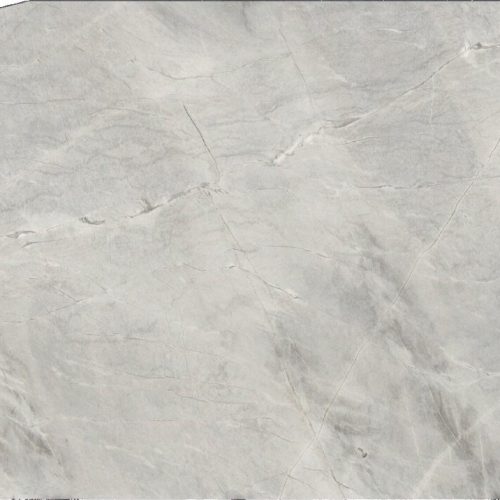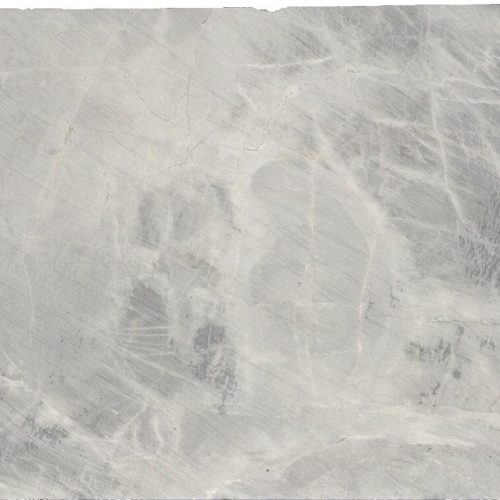Blue De Savoie Cross Cut Marble
Blue de savoie cross cut marble showcases the perpendicular cutting technique that reveals the stone’s most dramatic veining patterns. Quarried in the Savoy Alps of Eastern France near the town of Aime, this crystalline marble has been extracted since the early 19th century when French stonemasons first recognized its exceptional quality. The cross cut method, also known as fleuri cut, slices perpendicular to the stone’s natural bedding planes, creating circular and flowing vein patterns that differ dramatically from the linear striations found in vein cut marble. This cutting orientation produces what many consider the most visually striking presentation of blue de savoie, with sweeping curves and organic movement across each slab.
The Heritage of French Alpine Marble
The Savoy region's marble quarries have supplied European architecture for over 200 years, with blue de savoie cross cut becoming particularly prized during the Second Empire period in France. The geological formation of this marble occurred through intense metamorphic processes deep within the Alps, creating its distinctive crystalline structure and characteristic blue-grey coloring. Historical records show this stone gracing prestigious Parisian buildings and Alpine châteaux throughout the 19th and early 20th centuries. The limited annual production from these high-altitude quarries maintains the stone's exclusivity, with each extracted block representing millions of years of geological transformation. Modern quarrying techniques preserve the integrity of the stone while allowing fabricators to select the most dramatic cross cut sections for architectural applications.
Applications and Uses
Blue de savoie cross cut excels in applications where its circular veining patterns can be displayed prominently. Kitchen islands and countertops benefit from the stone's flowing patterns, which can be book-matched to create butterfly or mirror-image effects across adjacent slabs. The dramatic veining makes this marble particularly effective for statement walls, where the cross cut orientation provides maximum visual impact.
Bathroom applications include vanity tops, shower walls, and floor tiles in residential settings. The stone's natural variation means no two slabs appear identical, giving each installation unique character. Designers specify blue de savoie cross cut for luxury hotel lobbies, high-end retail spaces, and executive office environments where the marble's sophisticated appearance reinforces brand positioning.
Floor installations showcase the stone's circular patterns when viewed from above, creating organic movement through the space. Bar tops, reception desks, and fireplace surrounds all benefit from the cross cut's distinctive appearance. The stone performs well in both contemporary and traditional design contexts, bridging minimalist modern spaces with classical architectural details.
For commercial applications, blue de savoie cross cut works in light to moderate traffic areas. The polished finish provides formal elegance while honed surfaces offer a softer, more contemporary aesthetic. Feature walls in restaurants, boutiques, and professional offices use this marble to establish immediate visual interest and convey quality.
Design and Aesthetic Appeal
The aesthetic power of blue de savoie cross cut lies in its dramatic circular veining patterns and subtle color palette. Base colors range from soft blue-grey to deeper charcoal, with white and cream veins creating organic movement across each slab. This cross cut orientation reveals the full complexity of the stone's formation, displaying patterns that vein cut cannot achieve.
When properly selected and book-matched, adjacent slabs create symmetrical patterns that amplify the stone's natural beauty. The crystalline structure allows subtle light penetration, giving depth and luminosity that engineered materials cannot replicate. This translucence becomes particularly apparent when backlit, making blue de savoie cross cut an excellent choice for illuminated feature walls.
Contemporary interiors pair this marble with brass or gold fixtures, creating warm contrast against the cool stone tones. Dark wood cabinetry provides grounding weight while white marble or quartz offers brightness contrast. In traditional settings, the stone's elegant veining complements ornate moldings and classical proportions without competing for visual attention.
The difference between cross cut and vein cut is substantial. Cross cut displays circular, flowing patterns while vein cut shows linear striations. Most designers choose cross cut for spaces requiring visual drama and vein cut for applications emphasizing height and vertical movement. Both cuts come from the same quarry blocks but produce entirely different aesthetic results.
Available finishes include polished for maximum color depth and reflection, honed for a matte contemporary appearance, and brushed for texture and slip resistance. Each finish emphasizes different aspects of the stone's character while maintaining the distinctive cross cut veining pattern.
Caring for Blue De Savoie Cross Cut
Proper maintenance protects your investment and preserves the stone's appearance for decades. Blue de savoie cross cut requires sealing upon installation with a penetrating sealer designed for calcite-based marble. Resealing frequency depends on use, typically every 6 to 12 months for countertops and annually for walls or low-traffic floors.
Daily cleaning requires only warm water and pH-neutral stone cleaner. Avoid acidic cleaners, vinegar, lemon juice, and harsh chemicals that etch marble surfaces. Wipe spills immediately, particularly coffee, wine, oil, and colored liquids that can stain. Use cutting boards for food preparation and trivets for hot cookware to prevent surface damage.
For floor applications, sweep or vacuum regularly to remove grit that can scratch the surface. Place mats at entryways to reduce tracked dirt and moisture. Avoid dragging furniture or heavy objects across marble floors, which can cause scratches or chips.
Professional restoration services can address etching, scratches, and dullness through honing and repolishing. Minor etching from acidic spills can often be buffed out, while deeper damage requires professional attention. Regular maintenance prevents most problems and keeps blue de savoie cross cut looking new.
Use coasters under glasses and avoid placing acidic foods directly on marble surfaces. While durable, marble is softer than granite or quartzite and requires appropriate care. The investment in proper maintenance is minimal compared to the stone's longevity and enduring beauty.
Experience the Beauty of Blue De Savoie Cross Cut
Transform your space with the timeless sophistication of blue de savoie cross cut marble. Our team at Superior Selected Stone provides expert guidance through every step of your project, from slab selection to fabrication coordination. We help you understand the unique characteristics of each lot, explain book-matching options, and recommend the ideal finish for your application. Visit our showroom to see the stunning circular veining patterns in person and explore our current inventory of French alpine marble. Contact us today for personalized consultation and discover how blue de savoie cross cut can bring distinctive elegance to your residential or commercial project. Call now to speak with our stone specialists and begin creating your dream space.





